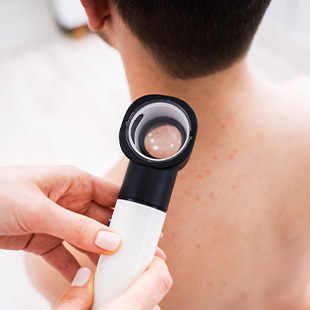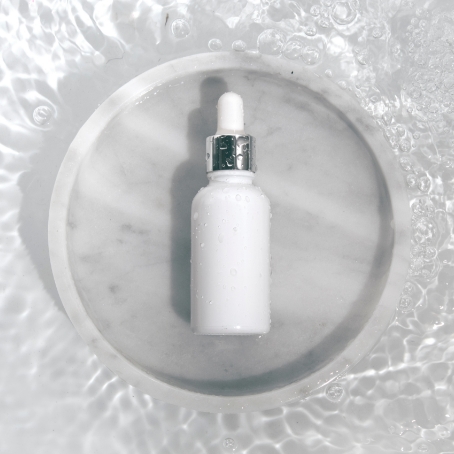On this page


What are Chemical Peels?
Chemical peels are a cosmetic skin treatment that use concentrated chemical solutions to exfoliate the surface of the skin. These chemical solutions typically include active ingredients like glycolic acid, salicylic acid, lactic acid, or trichloroacetic acid (TCA). This process causes the skin to gently peel over time, revealing healthy new skin cells underneath and stimulating the production of new proteins called collagen.
Chemical peels can more precisely and effectively exfoliate the skin than manual exfoliation. They can be personalized with a precise depth, where superficial chemical peels can help address surface-level concerns and rejuvenate the skin while deeper peels can be used for deep-seated and more significant concerns. Because chemical peels can be performed using different chemical solutions, they can also be customized to your unique needs.
Chemical Peel Candidates
Chemical peels can be a very effective treatment for a variety of cosmetic concerns. If you’re looking for
treatment of the following concerns, you may be a good candidate for a chemical peel:
• Acne
• Acne Scarring
• Brown spots
• Hyperpigmentation
• Melasma
• Sun Damaged Skin
• Visible Pores
Chemical peels may also be indicated for medical concerns like actinic keratoses or other precancers. In
some cases, certain chemical peels are not recommended for darker skin tones. Our Dermatology
Certified provider can help you determine if a chemical peel is right for your skin.
REAL PATIENT RESULTS
Visit our gallery to see the Biltmore Difference. We pride ourselves on consistently great results and it is our happy patients who are a true testament to our work.
VIEW BEFORE AND AFTER PHOTOS
What to Expect During a Chemical Peel Treatment
If you use certain medications like retinoids, you may be asked to stop using them ahead of your appointment. When you arrive, you’ll discuss your goals with our skincare providers and develop a treatment plan. Then, any makeup, dirt, or oil will be removed from your skin. Once prepared, the solution will then be gently brushed over the skin and left to activate for a specific amount of time.
During this time, you may experience some tingling or warmth. Once the time is complete, the solution is neutralized, and your skin is prepared for the rest of your day.
Chemical Peel Results and Recovery
Redness and sensitivity are normal after a chemical peel and typically subside within 24 hours depending on the depth of your peel. After redness fades, the skin begins to peel similar to sunburn (which typically lasts for 1-2 weeks). For medium or deep peels, peeling may be more significant and can last longer. Once the skin begins to heal, a noticeable improvement in texture, appearance, and quality
will become apparent.
Throughout recovery after a chemical peel, it’s essential to wear sunscreen daily. The skin will be photosensitive during this time and exposure to sunlight can result in significant damage. Make sure to wear a broad spectrum SPF 30 or higher sunscreen and sun protective clothing during this time. Chemical peels often work best in a package of treatments and our skincare providers can help you
determine the right frequency. For many patients, this is monthly but may be longer depending on your specific treatment needs.

WALK-IN APPOINTMENTS
If you have an immediate concern, you want to find quality care as soon as possible. Our office takes walk-in appointments and will be happy to address your concerns and offer you immediate treatment suggestions and medical care.
LEARN MORESchedule a Consultation
Chemical peels are an effective way to rejuvenate the skin and achieve a more noticeable glow. To schedule an appointment, call our Terre Haute, IN office, fill out our online contact form, or “Walk In Now.”

RYAN T. PATTERSON FOUNDER/CEO, DCNP
Ryan is State Licensed and Nationally Board Certified as a Family Nurse Practitioner (NP-C) by the American Academy of Nurse Practitioners. Additionally, he is board certified as a Dermatology Certified Nurse Practitioner (DCNP) by the Dermatology Nursing Certification Board. He has 20+ years of Dermatology Experience.
Meet The TeamTestimonials
Testimonials

SHOP SKINCARE PRODUCTS
We rely on medical-grade skincare products with quality ingredients clinically proven to restore and maintain skin health. Find your perfect products and develop a customized skincare routine designed to your skin type and skin concerns.






